By Dan Weisz
Over the past month I’ve seen a number of different Great Horned Owls. Many have been where friends told me I might be able to find them.
I’ve shown you photos of one pair of Great Horned Owls who spend time during the day roosting in a large wash in the Foothills. Perhaps you can see one owl in the photo below. I think of Palo Verde trees as having virtually no leaves and being pretty open with their foliage. Yet a two foot tall Great Horned Owl can find some privacy in them.
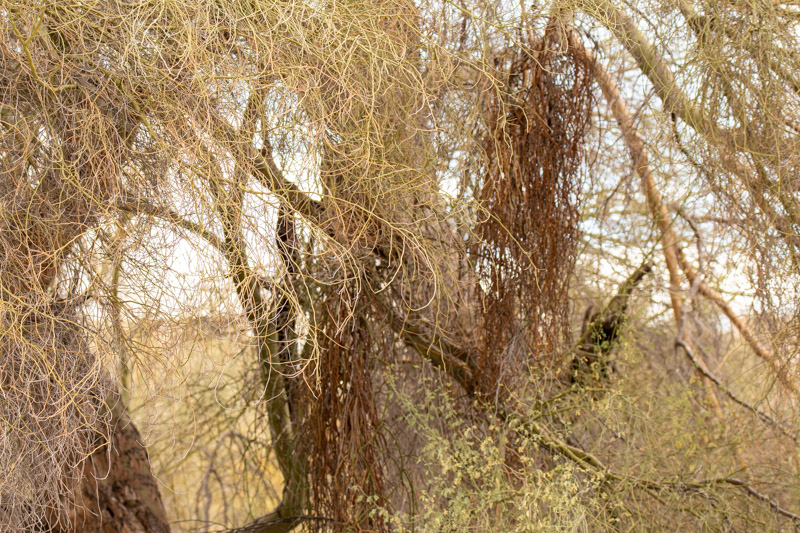
Taking a few steps to the right and the owl appears. It helps to have a telephoto lens, but it helped more to have a friend alert me to look closer in this particular tree.
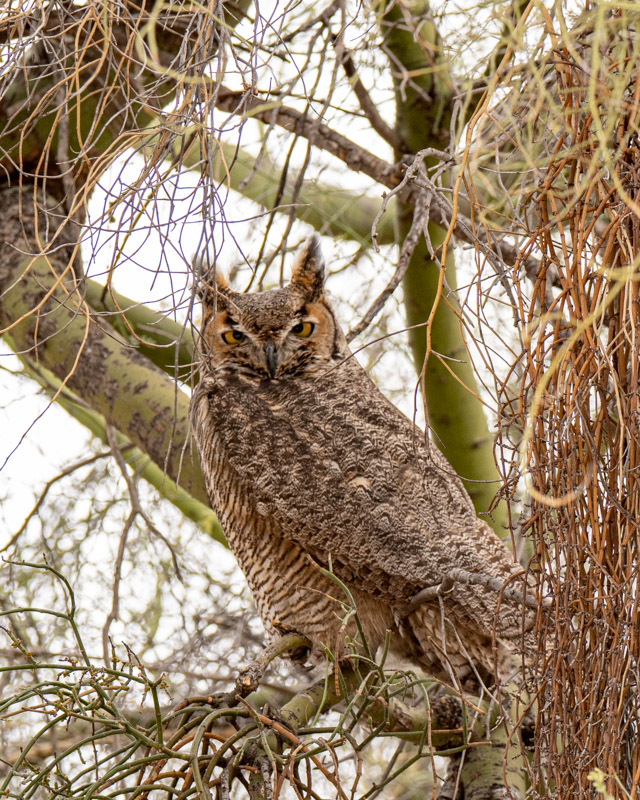
Three days later, I returned to the same wash. The same owl was perched in the exact same spot. You can match a number of twigs and branches near the owl in the photo below with those in the photo above. This owl was the larger of the pair, and the other Great Horned Owl could be found in another Palo Verde tree that was perhaps a hundred yards away. The owl below, being larger, is the female. And you can see that breeding season is approaching because you can see a part in the feathers in the owl’s breast. That vertical part denotes her brood patch. Female birds lose the feathers on their breast during breeding season. It allows for direct skin-to-egg and skin-to-chick contact without any feathers getting in the way and helps to keep the the eggs or hatchlings warm.
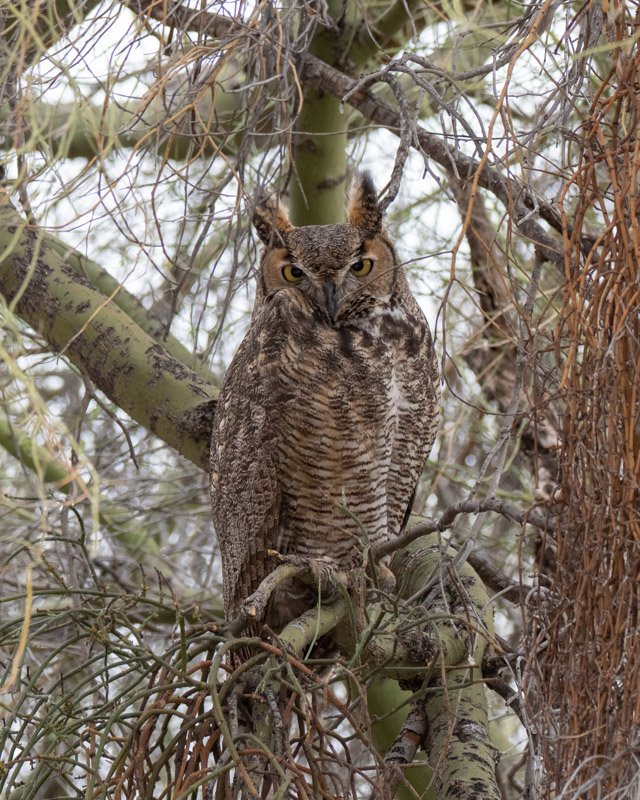
On a walk near Tubac, I found this Great Horned Owl sitting back in a very tall mesquite tree along the Santa Cruz River.
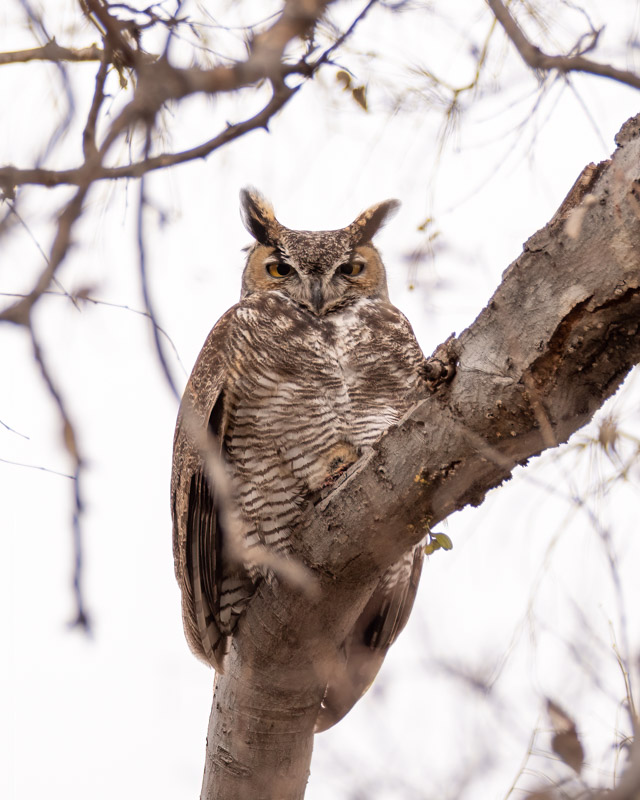
Here’s a close-up of the same owl. Those “horns” that give this owl its name are not actually horns. And although they are often referred to as ear tufts, they have nothing to do with the bird’s ears or hearing. We are not really sure what the purpose of those feather tufts serve. They may be part of the bird’s camouflage to help break up the silhouette of the bird. The may be desirable as a courtship feature. They may be a way of showing aggression or communication. It’s a mystery that only Great Horned Owls know the answer to.
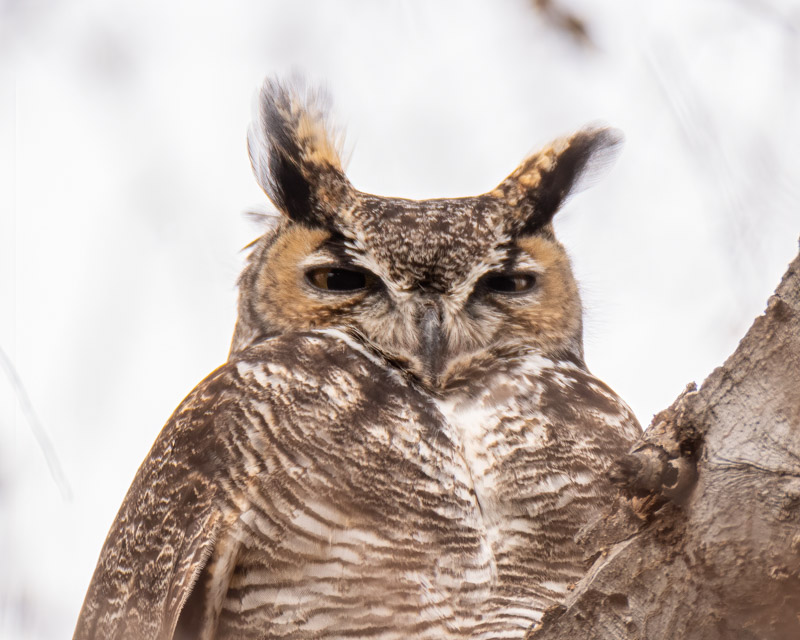
Another friend told me about an owl nest in mid-town Tucson. I was able to find it and the Great Horned Owl was sitting on the nest looking back towards me. Great Horned Owls do not build nests. They ‘re-purpose’ nests of other large raptors or ravens. With a breeding season much earlier than most other large birds, Great Horned Owls can find empty nests to take over. These birds will also “nest” on platforms, flat rooftops, and a number of other suitable surfaces.
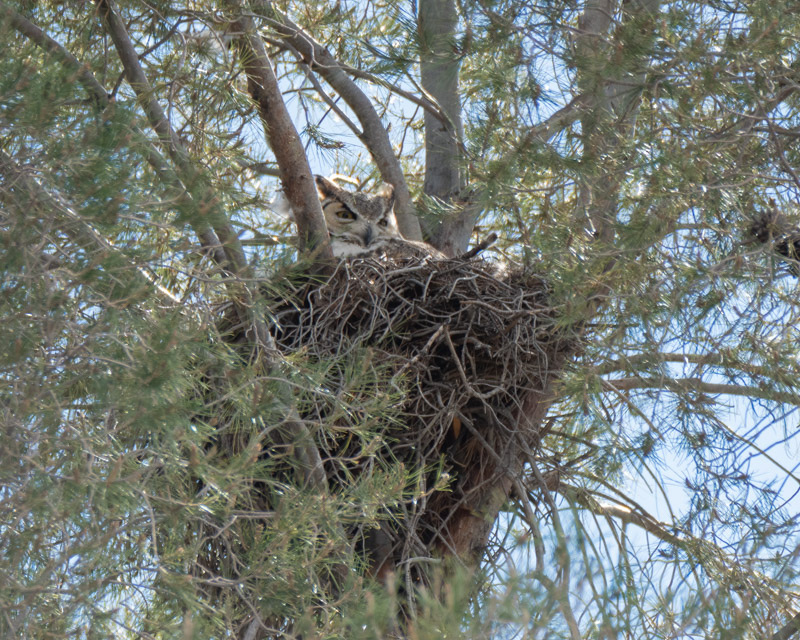
Here is the same photo, zoomed in. The owl did check me out but spent most of the short time I was there with her eyes closed.
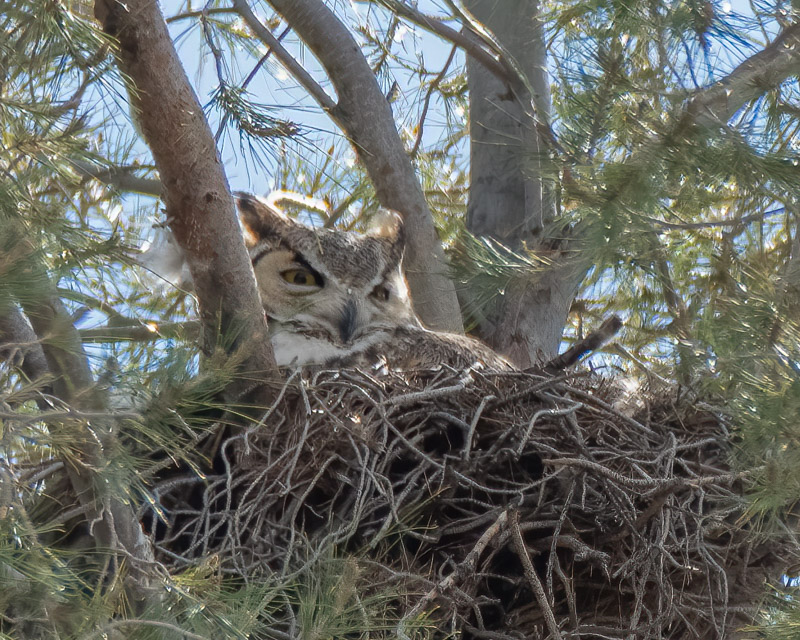
And finally, the WOW owl. I post some of my photos on social media. Last week a friendly person reached out to me after seeing my photos of the leucistic Red-tailed Hawk. She sent me a phone photo of the two owls in her tree and let me know that one was all white. Here is her photo below. Needless to say, when I finally saw the bird that she was talking about in the photo , I quickly asked about coming over to see it.
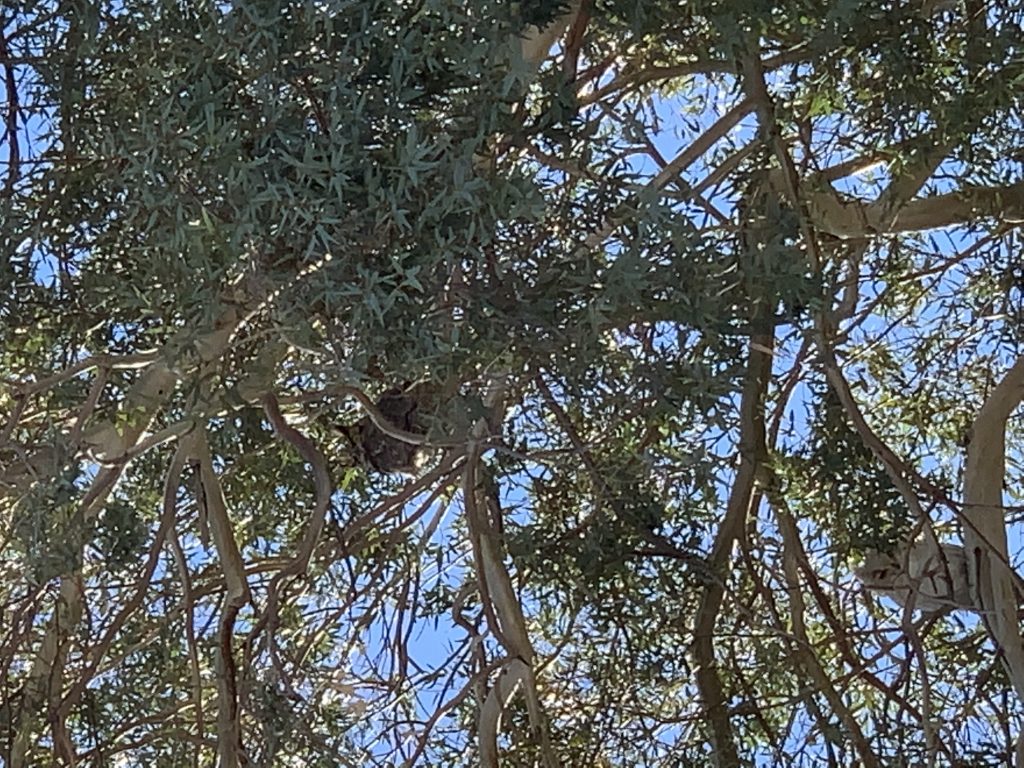
She was so very gracious and invited me over. Near the top of the eucalyptus tree sat the typically colored owl. I never saw that owl’s face and she never moved from that spot.
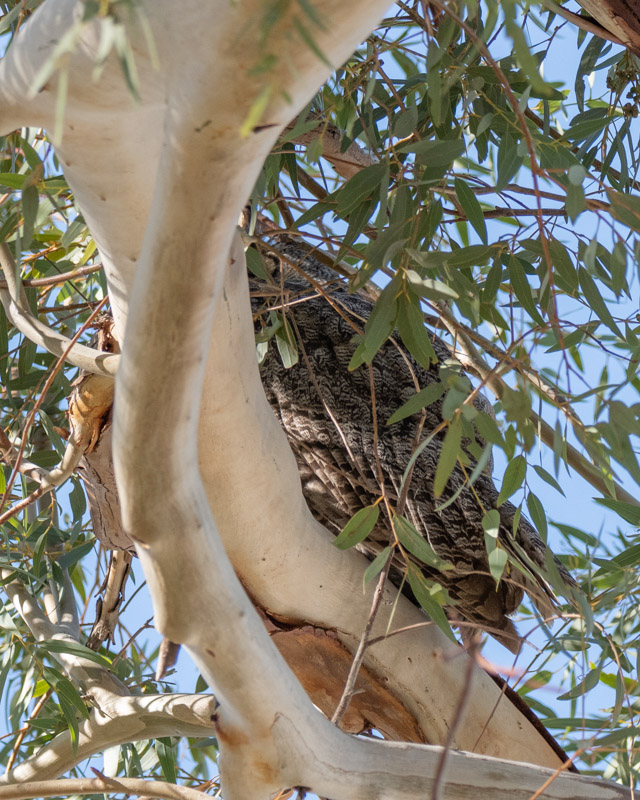
I took me a minute to see the “white” owl, as it blended in so well with the light bark of the eucalyptus. But when I found it, just WOW!!!!! This owl is smaller than the other, so it is the male in this mated pair. There is some yellow in the eye and some grays in many of the feathers, but this bird is practically all white and just so stunning.
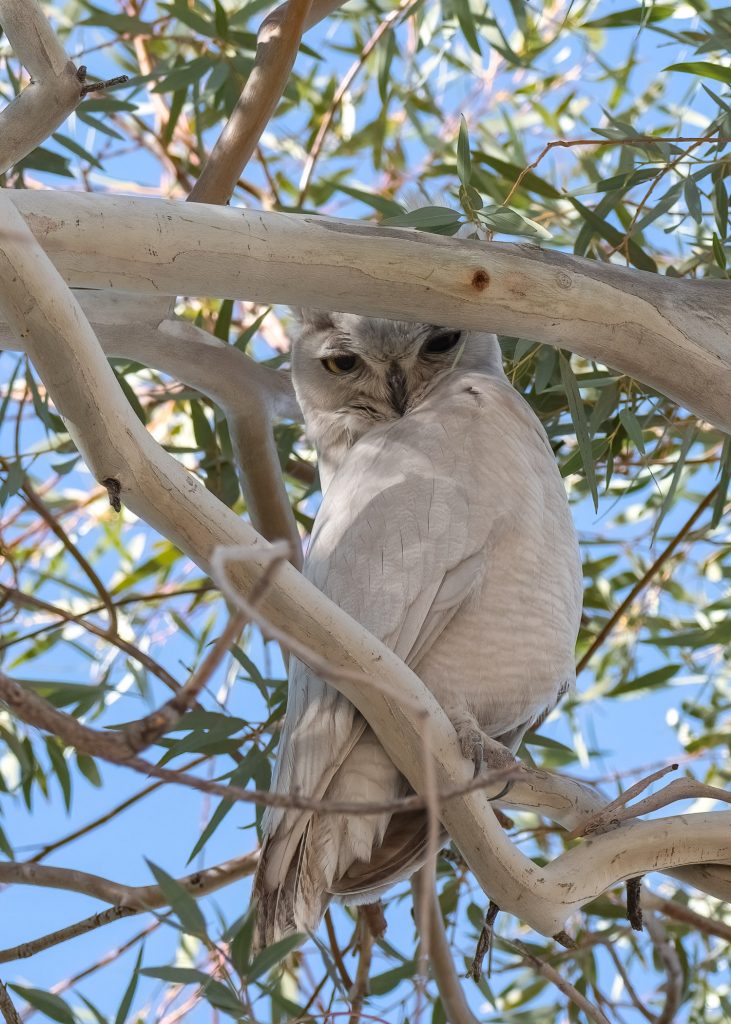
The leucistic Great Horned Owl barely moved while I was there, and it was perched almost straight above me in the tree. After looking at me for a bit, it went back to sleep. It had moved over just a bit so I could easily see one of its plumicorns (ear tufts).
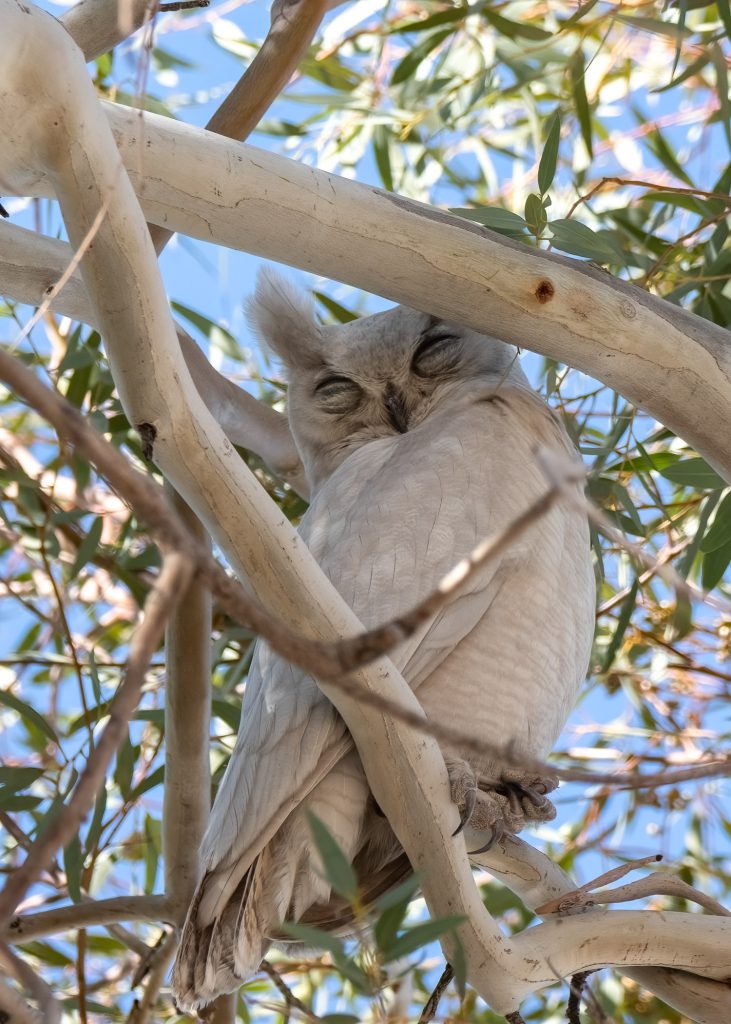
I looked closely at his feet and talons. In the picture above, you can begin to see what I blew up in the photo below. The owl is only resting on one foot. The other is held in a ball as the bird snoozes. The underside of the owl’s feet is covered with a rough, knobby surface that helps it to grip prey (or a perch). And those talons!!!! A Great Horned Owl will grip its prey, squeezing with the force of 500 pounds per square inch!
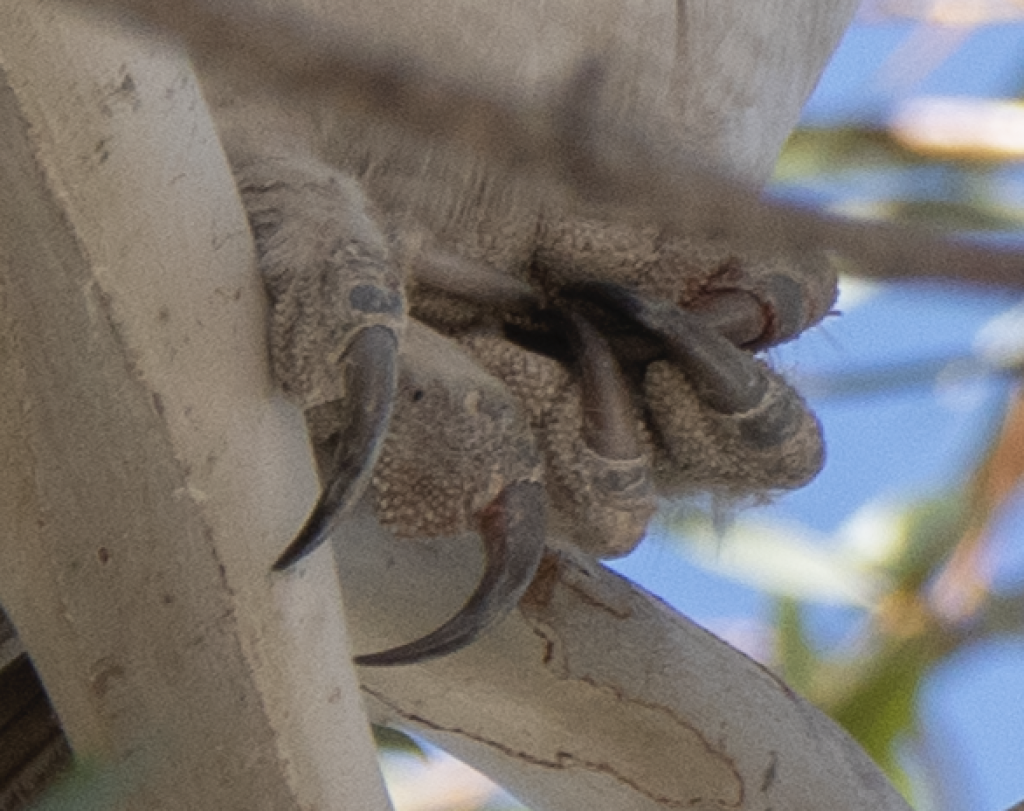
I’m looking forward to a great owl season. Hopefully I’ll have more photos to share over the next few months! If you have owls in your yard and would like me to take their photos, I would be happy to do so.
